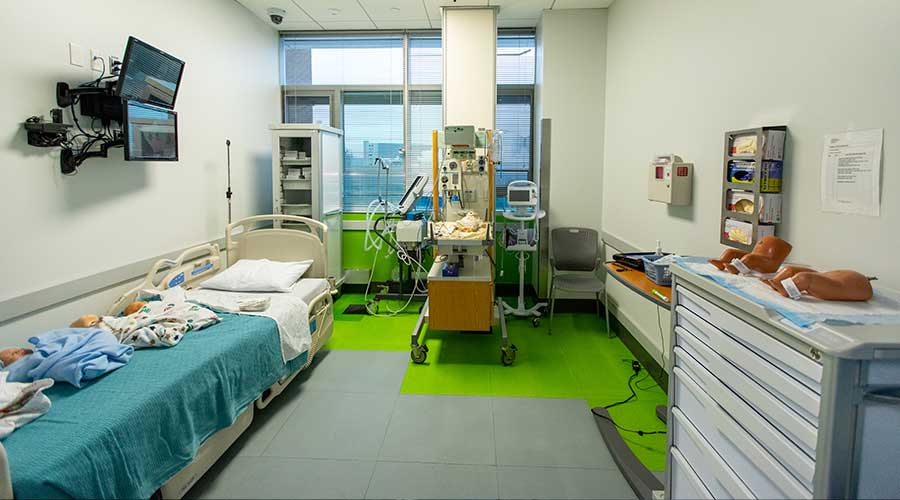
How to Take the Chaos out of Your Sim Center Control Room
NEED TO REDUCE DISTRACTIONS IN YOUR SIMULATION CENTER?
Healthcare simulations are designed to prepare students for high-stakes medical situations. That means that while simulation exercises take place in a safe and controlled environment, they also need to replicate the chaos and urgency of a true medical emergency. When a “patient” codes or a barrage of trauma victims stretch participants to the limit, they’re learning about real-life stressors through healthcare simulation. One area of healthcare simulation that should be free from chaos and distraction, however, is the control room, where facilitators or simulation technicians monitor and run each scenario. Unfortunately, poor design and bad technology in your control room can create distractions that negatively impact simulations and learning. But good design and the right technology can help scenarios run smoothly and improve participants’ experience. Keep reading to learn more about control room distractions and solutions to prevent them.
IS ONE-WAY GLASS THE FAIREST OF THEM ALL?
One way to keep the bustle of the sim lab separate from the operation of the control room is to enclose the control room in one-way glass, also known as a one-way mirror. A window in the control room allows facilitators and sim techs to see what’s going on in the training room while keeping out the noise and distractions of the scenario. One-way glass in the control room also has benefits for students. It prevents them from getting distracted by the hustle and bustle of the work that goes on in the control room. It also lets them participate in a supervised simulation without feeling like someone is looking over their shoulder. However, glass in control rooms can also introduce new distractions. Light reflecting off the glass can create glares that make it difficult for facilitators and sim techs to see into the training room. And if the light in the control room is too bright, participants can sometimes see into the control rooms and become distracted by the movement there.
One way to solve these issues is to not have glass in your control room at all. Facilitators and sim techs can monitor and run scenarios from the sim lab itself. Or, if you have the space in your simulation center, you could move the control room away from the sim lab entirely and have facilitators or sim techs monitor scenarios remotely through streaming video and audio. For control rooms where glass is still the best option, turning off the lights inside the control room itself is a possible fix; the light from monitors and keyboards can allow sim techs to still complete their work without creating distractions for students. Simulation centers can also bring in an AV expert to alleviate glare on the glass with an updated lighting design, or by reconfiguring the technology layout of the control room. The size, design, and layout of your simulation center—as well as the number and location of your control rooms—all play a large role in whether one-way glass is the right choice for you.
THE SIM CENTER TOOL TO RULE THEM ALL
One-way glass isn’t the only thing that can cause chaos in the control room. Cable clutter, unreliable audiovisual equipment, and too many tools that don’t work together can also overload and overwhelm facilitators and simulation technicians. SIMStation – designed by simulation enthusiasts for simulation enthusiasts – addresses these common AV challenges that create distractions for both simulation operators and students. For the sim lab, SIMStation provides essential training room components including a professional microphone and lightweight cameras. For control rooms, it provides an all-in-one AV and debriefing tool that eliminates the risk of unreliable, incompatible AV. SIMStation Enterprise is ideal for simulation centers with multiple training rooms. The comprehensive solution eliminates the need for multiple tools and control stations, which can be difficult for one sim tech or facilitator to manage at once.
With SIMStation Enterprise, sim techs and facilitators just have to manage one tool for both broadcasting live AV streaming in multiple training rooms and recording scenarios for playback and debriefing later. SIMStation Essential can simplify in-situ trainings with its ultra-mobile, high-end debriefing system. With a short setup time and a simple interface, it is ideal for simulations run by a small team – or a single sim tech. The SIMStation Essential helps mobile simulation scenarios run more smoothly by minimizing chaos and distraction.
LEARN MORE ABOUT SIMSTATION TODAY
There’s a lot to consider when planning a healthcare simulation facility, but SIMStation simplifies the AV technology aspect of your training and control rooms. Learn more about SIMStation today or contact one of our simulation experts.

